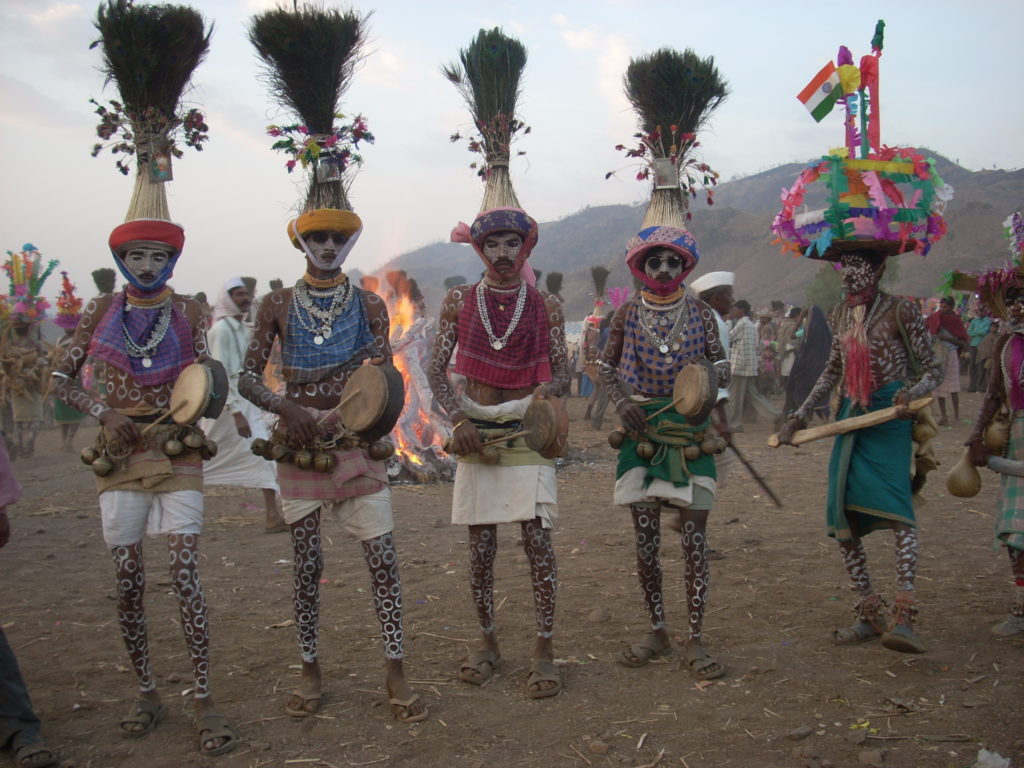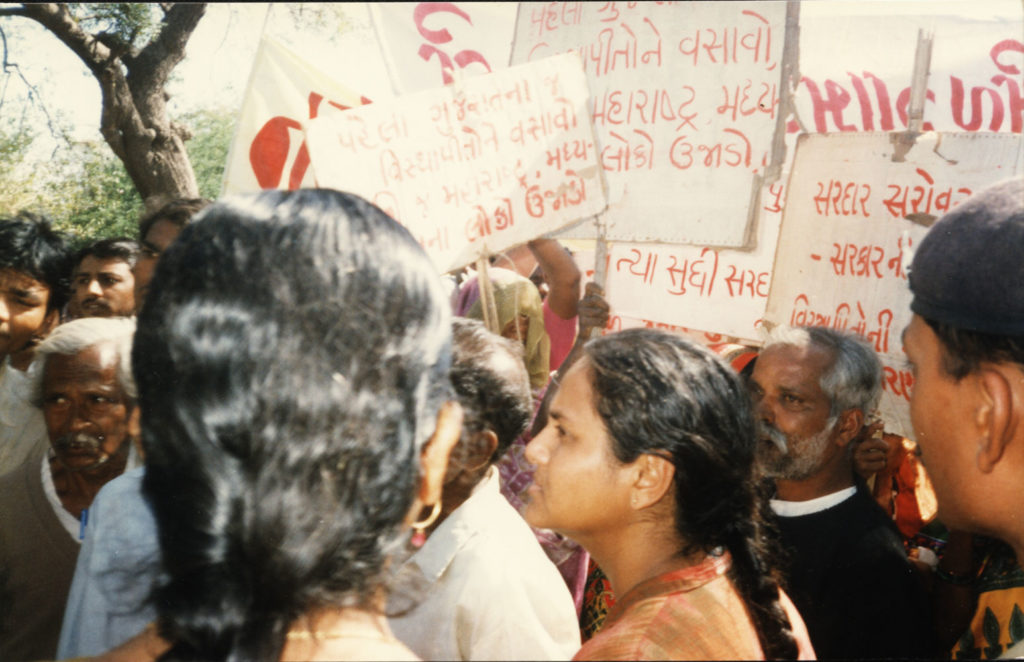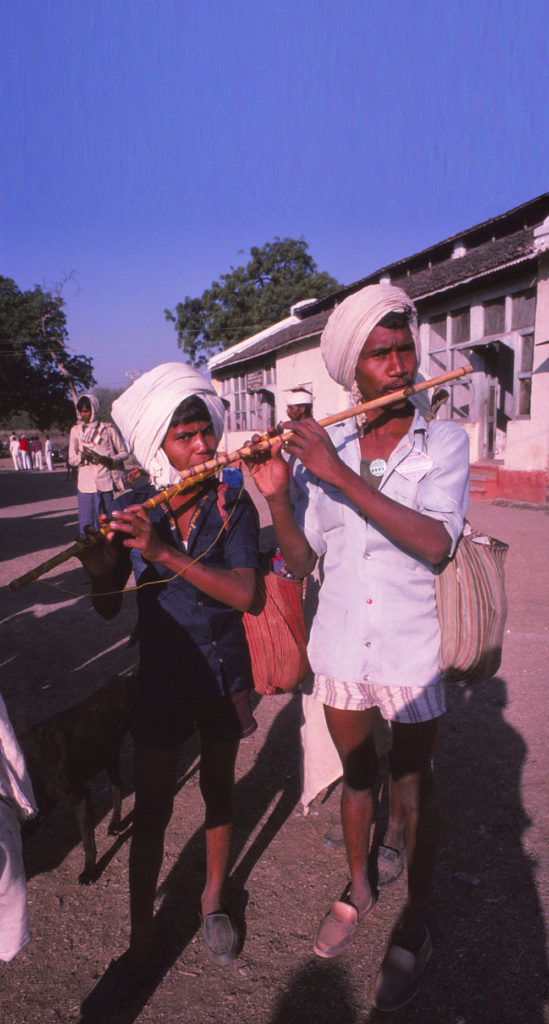9-11 minutes
The Rationale
The Narmada Struggle has been considered an important instance of mass resistance in the history of independent India because of the important contributions it has made to development discourse. This is best explained in the words of Professor Shiv Vishwanathan, who says:
“…To me, the most important historical event of the last two decades has been the battle over the Narmada dam. The battle over the Narmada dam reflects a journey, a pilgrimage, and a recollection of 30 years of resistance. It demands a different kind of story telling. This struggle is about a collective history of a people challenging the official history of a nation state…”
The Hindu, 29 March 2016
Unfortunately, like the dominant development paradigm, there is also a dominant history narrative of a Nation State wherein people’s histories, voices and resistance are largely absent. What is written and promoted is mostly the dominant history narrative of a nation and its development. People’s struggles like the Narmada Bachao Andolan (NBA) that have challenged mainstream notions of development, find space, if at all they do, in cursory references and footnotes within the dominant, mainstream narrative.
This absence from the pages of history is especially true for the voices of the people displaced by development projects across the country, because displacement due to ‘development’ projects, unlike other forms of displacement, is considered an inevitable component of national growth and hence it is considered to be in the national interest.
India has been a witness to several types of man-made forcible displacements. Some examples are the displacement that took place during partition at the time of independence or displacements due to disputes over ethnicity, religion, etc. In these kinds of forcible displacement, the displacement is recognised as an avoidable tragedy and it is acknowledged that the aggrieved people have been wronged. Development induced displacement on the other hand, is considered inevitable and legitimate. Moreover, while in other forms of displacement, people may often nurture a hope of being able to return to their homes and lands someday, development induced displacement is permanent and there is no scope for the displaced to return to their homes and lands ever. This is because lands, villages, towns, forests, rivers, streams, hills, waterfalls, historical and religious sites are permanently destroyed with the coming of dams, mines, and other types of projects. And sadly, the plight of the victims of development goes unnoticed and their voices remain unheard since their displacement is considered inevitable and thereby essential for the nation’s growth rate.
Lately, however, there is a growing interest in knowing more about and studying the impact ‘development’ has on people and environment and people’s resistance to development induced forced displacement. But even where there are some attempts to study people’s struggles which have challenged dominant development paradigms, it is often found that the affected people are mostly treated as passive respondents, objects and or study samples. The people who have actively created history have very little place in this writing of history. Even when a movement writes its own history, even though the struggle has been a mass movement, the focus is often on the issues, important actions, programs, and a few well known faces of the movement.
The Narmada struggle as a mass movement has involved thousands, if not lakhs of people, and even the number of those who were/are active and in the forefront may run into hundreds. That has been the strength of the struggle. However, even in the studies and narratives of the movement, people’s roles and their own voices have not come to the fore adequately. The extraordinary contributions of ordinary people, their lives and the collective struggles of communities have not found a significant place in these histories.


Therefore, many people of the Narmada valley and many activists like me (Nandini Oza) felt that while there is a need for the NBA to have a legitimate place in the development history of the nation there is also a need for people to have a place in the history of the NBA in particular. A senior tribal leader of the NBA explains this aptly as follows:
“I feel as if the twenty two years of the Narmada struggle have not been written about anywhere. Whatever has been written is about the issues the movement has raised like environment impacts, cost benefit analysis of the project, displacement and rehabilitation … But how the people and activists have participated in the Narmada struggle, or how they have fought – that has not been written about anywhere … I feel such a history should be written by meeting the people from every village who have participated in this struggle … If such a history is written, it will be of immense use for the generations to come. The future generation will get to know how their ancestors fought to save their lands, the forests, the villages and save the mother Narmada herself…”
Kevalsingh Vasave, Oral History Interview August 2007
Insights from these Oral Histories
With all this in mind, I interviewed eighty key participants and digitally recorded over 400 hours of their oral histories of the Narmada struggle around Sardar Sarovar Project (SSP). These recordings help us understand how powerful was the people’s resistance to the SSP, the reasons behind it, and the role played by common people and their contribution to the movement and its history. They offer many insights into issues like challenging dams as development models, the environmental impacts of large dams, the life of victims of displacement, the flaws in rehabilitation plans and their execution and developing sustainable alternatives for water and power generation.
These oral histories also help us understand the multiple conflicts that define the struggle: the conflict between two development ideologies GDP and profits centred vs. sustainable development based on equity and justice; between two world views; between two life styles, cultures, traditions within a Nation; between development planners and technocrats and people’s traditional wisdom and knowledge. They also give us an insight into how development planners have a very narrow view of the displacement and rehabilitation of victims of development. The voices of the people help us understand that for those uprooted in the name of development, it is not just a question merely of compensation and rehabilitation but it is about people’s participation in development planning, their Right to know, and the right to obtain their consent. These oral histories, make it possible to understand the relationship that people have with the Narmada River, their cultural ethos, their traditions, their socio-economic practices, their natural resource based sustainable livelihood and its challenges, their languages, festivals, beliefs and what the forests and common property resources mean to the people living on the banks of the Narmada. They bring out sharply that the Narmada valley is one of the oldest and one of the richest river valley civilisations of great historical and archaeological significance.
Most importantly, these oral histories of the Narmada struggle help us understand how the people of the Narmada valley fought to preserve their way of life, their world view, their lands, homes, forests and the River Narmada herself from the onslaught of “development” and the many challenges they had to face in doing this. These oral histories are records of one the most important social and environmental movements of Independent India. They record the experiences and insights of the struggle as seen from within by its most active members. These are voices which are rarely heard.
An important feature of these oral histories is that the interviewer and most of the interviewees had worked together in the NBA for several years in very challenging circumstances, so there existed a bond and a trust between them. This was crucial for the interviewees who have therefore been able to share freely their lives, the roles they have played, the many details of the struggle including the highs and the lows of the movement. As the personal views and thoughts of those directly involved in the struggle have been shared in these oral history recordings, they are of immense significance.


Finally, the oral history of the Narmada movement helps us understand the profound influence that people’s struggles have had on the debate around large dams and development the world over. It helps us understand the people, communities, environment, culture, heritage, traditions of the Narmada valley and the changing notions of development in the process of nation building. It helps us understand the people’s struggle for sustainable development and its many intricacies. These oral histories are not only a rich source for students of history but these voices of resistance and loss can help development planners to plan projects that have smaller ecological, cultural, social, economic, religious, footprints. It will help influence those in power to not build the remaining dams that have been planned on the Narmada and to protect the Narmada River Valley as our national heritage. It could also help to build a case to decommission some of the destructive dams that have not been able to achieve even fifty percent of benefits they were supposed to bring.
For those interested in the songs of resistance of the Narmada Bachao Andolan, click here
I believe that his reflections on documenting the Narmada struggle around the Sardar Sarovar Project will encourage many to recognize the deeper significance of such work and engage with it – so that this history is not lost, but carried forward, especially for the communities that have been part of this great river valley civilization and who have fought to save the Narmada.